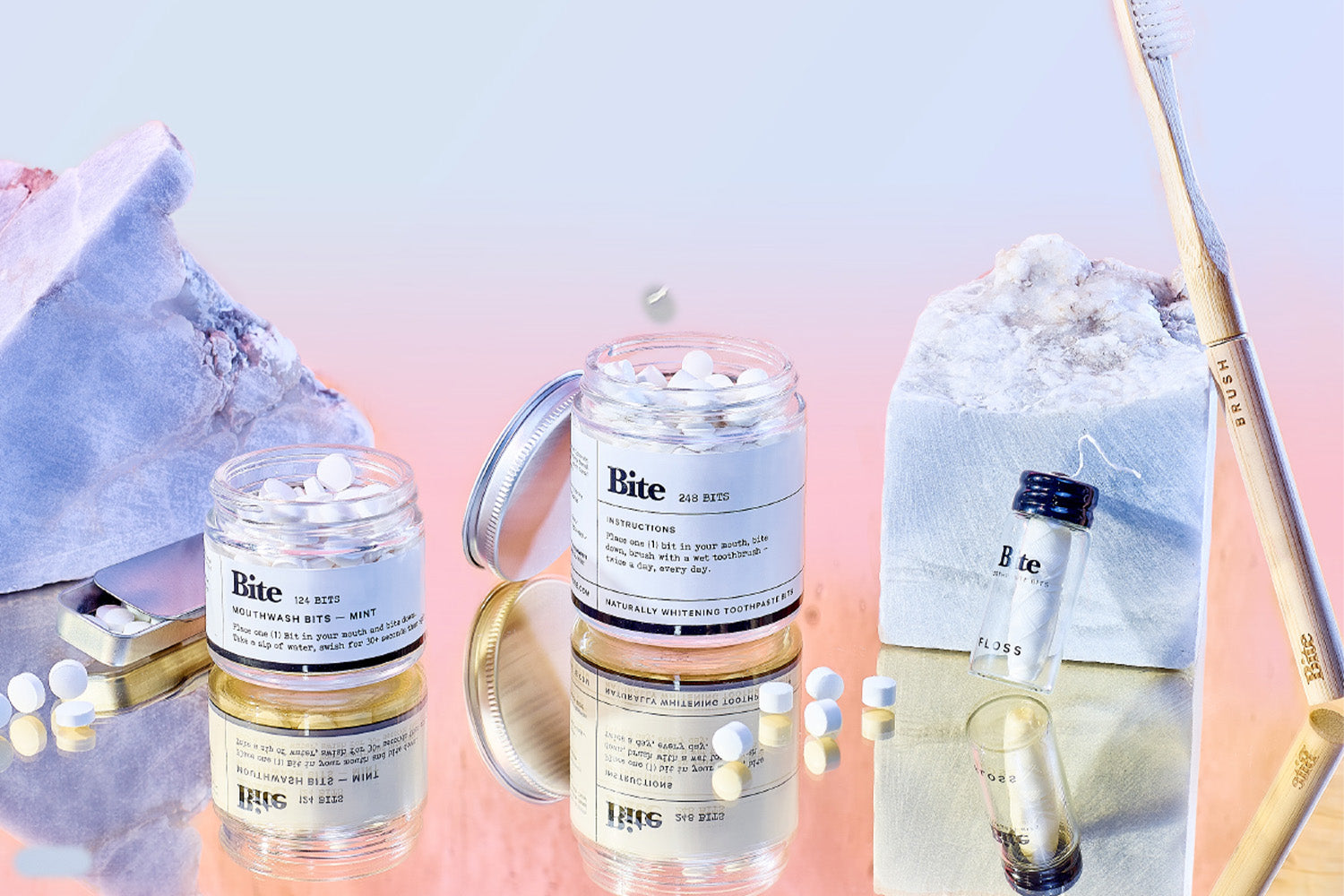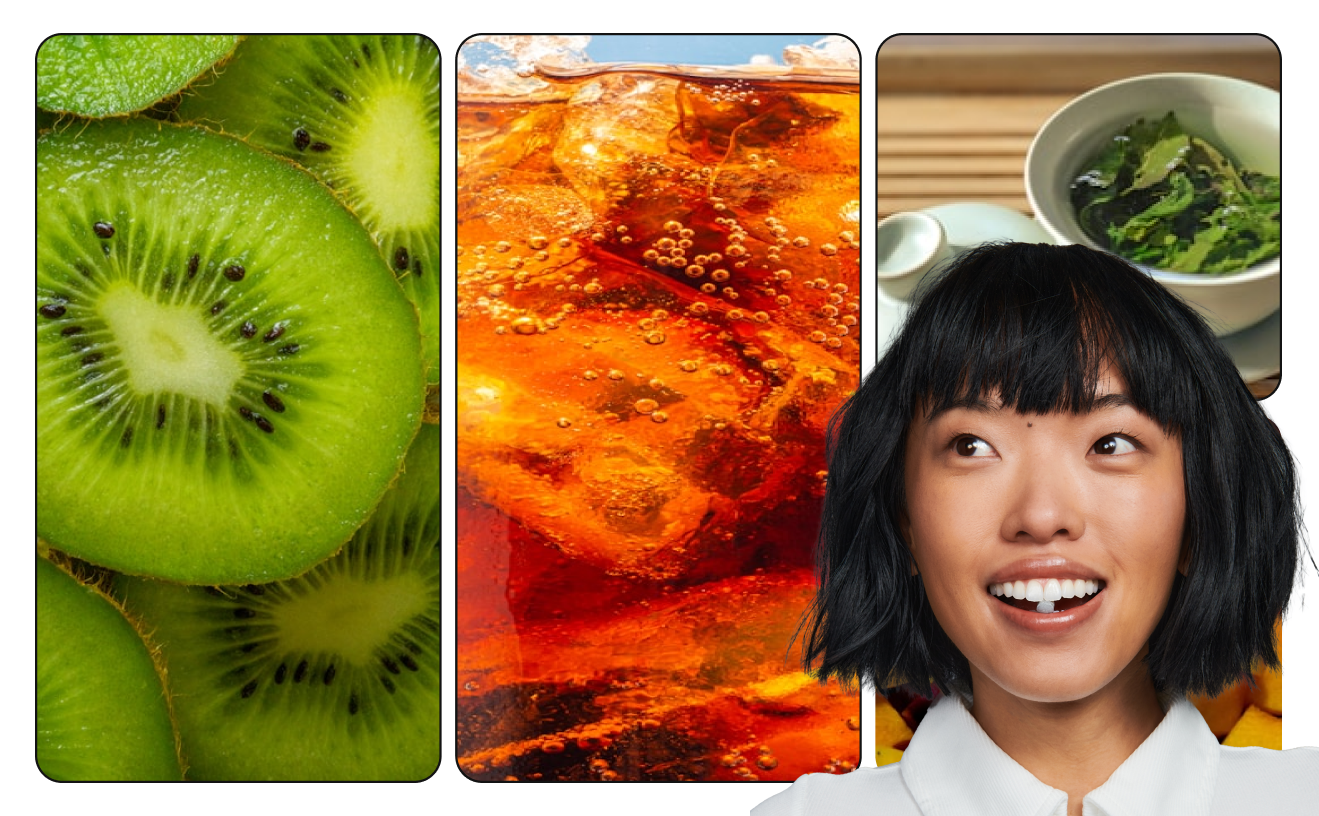What Are Microplastics and Are They Dangerous?
These days, it seems as though plastic is everywhere, and it is. From plastic bottles to containers to bags, we use plastic every day and for countless purposes.
If it was not bad enough that plastic is everywhere, there is now the issue of microplastics, another threat to our ecosystems and to humans.
What are microplastics, and how dangerous are they? Bite is here to give you the low-down on the threat of microplastics, plastic pollution, and how you can help eliminate microplastics and other plastic waste from our oceans and landfills.
What Are Microplastics?
Microplastics sound exactly like what you expect them to be–they are tiny pieces of plastic that come from larger pieces of plastic that have not fully broken down.
Microplastics typically range from five millimeters to one nanometer, and there are even nanoplastics that are tiny particles smaller than one nanometer.
Primary Microplastics
Primary microplastics are those designed to be small — microbeads are a perfect example. Microbeads are used in cosmetic and cleaning products and are used as exfoliants and mild abrasives.
Secondary Microplastics
Secondary microplastics are those that are generated from larger plastic products. Over time, plastic breaks down into smaller pieces, but microplastics can also be generated from abrasion and wind.
Where Do Microplastics Come From?
As mentioned before, microplastic particles come from larger pieces of plastic that have partially broken down. Because most plastics have an extensive lifespan after being disposed of, plastic debris is becoming a more common contaminant in water and other ecosystems.
Plastic products like single-use plastic bottles have a lifespan of 450 years, meaning that it will take centuries just for one plastic bottle to break down. Now imagine the countless other plastic products we use and dispose of daily; the waste really adds up.
Where Are Microplastics Found?
Unfortunately, microplastics are everywhere. These tiny plastic fragments have been found in every single ecosystem on the planet, interfering with marine life, tap water, and key resources.
Even worse, a recent study found microplastics in human blood. Out of the 22 participants, 17 had detectable amounts of microplastics in their blood. How do microplastics enter humans, though?
There is something in the water, and that is microplastic. Microplastics are found in countless water sources and can even end up in our drinking water.
Microplastics, and plastic items in general, are found in water sources like oceans partially because of marine dumping. Marine dumping is the intentional act of disposing of waste in water sources, whether it be from a personal or industrial source.
Microplastics can also enter water sources through personal littering, which can come from leaving trash near bodies of water and even through trash being carried by rainwater into storm drains.
Because there is limited space in most landfills because of excessive amounts of waste, individuals and industries are resorting to marine dumping to dispose of waste that includes plastic.
Microplastics have also been found in soil used to grow produce, which is another way that microplastics can enter our systems.
Microbeads
Microbeads are another contributor to the problem of microplastics. Microbeads are tiny plastic spheres that are used in a wide variety of products ranging from cleaning products to personal care products like face washes and masks.
Microbeads are used as exfoliants and mild abrasives and are made from synthetic polymers like polyethylene and polypropylene.
These tiny spheres end up in oceans to be ingested by fish and other sea life, and they can cause health issues like tissue laceration and inflammation.
How Do Microplastics Impact Human Health?
So, why are microplastics bad for our health? First, many types of plastic are made with extremely harmful chemicals that are linked to certain cancers and other health problems.
Microplastics also attract microorganisms that can cause infections in humans as well. Because there is such a high concentration of microplastics in the environment and water sources, risks of health issues like cancer and infections are higher.
PET
Polyethylene terephthalate, or PET, is a type of plastic used to manufacture water bottles and bottles used to package condiments and dressings.
Phthalates are added to PET, and these chemicals are known as endocrine disruptors. Your endocrine system regulates countless functions in your body, so phthalates pose a serious risk for your health.
Polymers
Plastic is made by connecting minuscule chemicals to form bigger chemicals, and these are called polymers.
There are natural polymers that our bodies are made to break down, but because plastic is a synthetic polymer, experts are still researching and learning about how our bodies break these polymers down.
Because microplastics cause various health issues for animals and fish that consume them, it is safe to assume that microplastics also cause health problems in humans as well.
How Do Microplastics Impact the Environment?
Microplastics not only pose health risks for humans, but they also pose health risks for our earth’s ecosystems and the animals that inhabit these ecosystems.
Many fish and sea life cannot distinguish microplastics like broken-down plastic bags from the food they normally eat, so these species ingest microplastics daily.
When these species are constantly consuming microplastics, the chemicals from these particles accumulate and cause major health issues that can be fatal. Microplastics can also travel upwards in food chains because of the natural cycle of animal species consuming others.
In fact, there will be more plastic in the ocean than fish by 2050.
Because plastics and microplastics have such an extensive lifespan, they can outlive multiple generations of people and animals while harming the humans and animals living in the present day.
Microplastics as an Ecosystem Threat
Because microplastics cause an array of health and safety issues for countless species of animals, they pose an overall threat to the ecosystems that these animals inhabit.
Ecosystems are a crucial component to the health and endurance of the earth because they maintain balance and provide life-giving resources that humans need to survive.
Many ecosystems already experience distress from human activities like deforestation and excess waste, and microplastics only add to the problem.
With species of animals dying of health issues associated with the ingestion of microplastics, ecosystems are greatly threatened.
Biodiversity is a key characteristic of our ecosystems. Biodiversity refers to all animal and plant species that help maintain the function and balance of an ecosystem.
For example, bees play a crucial role in their ecosystems because they help pollinate plants that provide food for humans and habitats for other animal species to live and thrive.
With microplastic pollution putting ecosystems in jeopardy, we will continue to see the degradation of these systems and, ultimately, the earth.
Is There a Solution to Microplastics?
In simple words, yes, microplastics are incredibly dangerous to the health of humans, animals, and ecosystems. So, what can be done to reduce the amount of microplastics that end up in our oceans and bodies?
One way to cut down on microplastics is through legislation. In 2015, President Obama passed the Microbead-Free Waters Act. This act prohibits producing and distributing “rinse-off” cosmetic products containing microbeads like face washes and even toothpaste.
Unfortunately, this act does not cover the manufacturing and distribution of cleaning products containing microbeads, but passing this act is one step in the right direction!
Another way to combat the issue of microplastics is to reduce the overall use of plastic.
The products we use daily are usually packaged in plastic, and those products are ones that we replace regularly, creating copious amounts of waste.
At Bite, we understand how important it is to maintain routines that help keep our bodies and minds healthy, but we also know how wasteful the products in these routines can be.
That is why our line of personal care products are made with zero plastic. We know how much the waste from products like toothpaste and mouthwash can add up, so our toothpaste and mouthwash bits are packaged in refillable, recyclable glass containers so that you can build a zero-waste oral care routine.
Plastic toothbrushes also generate a lot of waste, especially since toothbrushes need to be replaced often. That is why our toothbrushes are 100 percent plastic-free and are made from eco-friendly bamboo.
With how the world operates these days, it can be difficult to avoid using plastic. However, at Bite, we believe that small changes can lead to something bigger.
We have committed to using zero plastic in all our products so that eliminating plastic from your personal care routine is easy for you. We even send you refills of products like toothbrush bits, mouthwash bits, and plastic-free floss in compostable pouches so that you are always stocked up on clean, plastic-free oral care products.
The Bottom Line
We only have one earth to live on, and we have caused immense damage to it. The mass production of plastic products is creating a world dominated by plastic to the point where microplastics can be detected in our bloodstreams.
The choices we make, whether big or small, have power and the ability to either positively or negatively affect the health of our earth.
Whether you choose to swap out your personal care products or even use a metal straw instead of a plastic straw, these small changes can lead to bigger changes for our earth.
At Bite, we understand that large companies also play a role in the microplastic pollution crisis. We are devoted to doing what it takes to eliminate plastic from our products and practices so that zero-waste living is made easy.
Sources:
The Microbead-Free Waters Act: FAQs | FDA
Scientific Evidence Supports a Ban on Microbeads | ACS
The Lifecycle Of Plastic | WWF Australia
Discovery and quantification of plastic particle pollution in human blood | Science Direct
A Growing Concern: Microplastic Pollution on Farm Fields | NRDC
How Plastic Affects And Threatens Human Health | Plastic Health Coalition
Polyethylene Terephthalate May Yield Endocrine Disruptors | NIH
Phthalates and Their Impacts on Human Health | NIH


